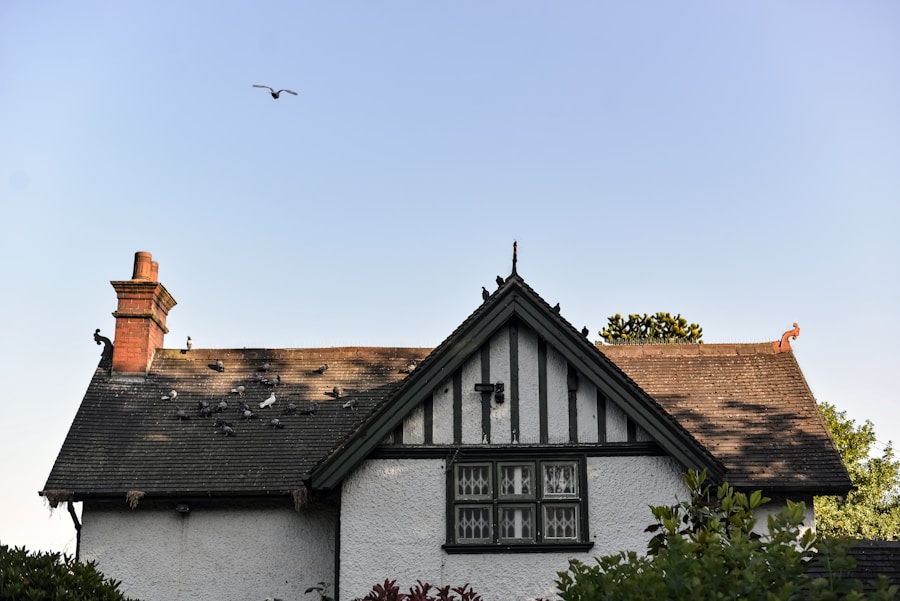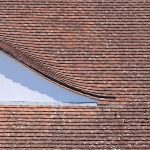
Ice dams are a common winter phenomenon that can cause significant damage to homes and buildings. They form when snow on the roof melts and then refreezes at the edge of the roof, creating a barrier that prevents water from draining properly. This trapped water can then seep under the shingles, causing leaks and water damage to the interior of the building. Ice dams are more likely to form on roofs with inadequate insulation and ventilation, as well as in areas with fluctuating temperatures. Understanding how ice dams form is crucial for preventing and addressing the potential risks and damages they can cause.
When temperatures fluctuate, snow on the roof can melt and then refreeze at the edge, creating a ridge of ice that prevents proper drainage. This can lead to water backing up under the shingles and causing leaks and water damage to the interior of the building. In addition to causing damage to the roof and interior of the building, ice dams can also pose a safety hazard if they fall off the roof. Understanding the formation of ice dams is essential for homeowners and building managers to take proactive measures to prevent their formation and address any existing ice dams before they cause significant damage.
The Dangers of Ice Dams: Potential Risks and Damages
The dangers of ice dams extend beyond just the potential for water damage to the interior of a building. In addition to causing leaks and water damage, ice dams can also lead to mold growth, which can pose health risks to occupants of the building. Furthermore, the weight of ice dams can put stress on the roof structure, potentially leading to structural damage or even collapse. In addition, as mentioned earlier, falling ice dams can pose a safety hazard to people and property below. It is important for homeowners and building managers to be aware of the potential risks and damages associated with ice dams in order to take proactive measures to prevent their formation and address any existing ice dams before they cause significant damage.
In addition to causing water damage and mold growth, ice dams can also lead to structural damage to the roof and pose a safety hazard if they fall off the roof. The weight of ice dams can put stress on the roof structure, potentially leading to structural damage or even collapse. Furthermore, falling ice dams can pose a safety hazard to people and property below. It is crucial for homeowners and building managers to be aware of these potential risks and damages in order to take proactive measures to prevent their formation and address any existing ice dams before they cause significant damage.
Safe Ice Dam Removal Techniques: Best Practices and Methods
When it comes to removing ice dams, it is important to do so safely and effectively in order to prevent further damage to the roof and building. One safe ice dam removal technique is using a roof rake to carefully remove snow from the edge of the roof, which can help prevent the formation of ice dams. Another method is using a steamer to melt the ice dam, which should be done by a professional to ensure safety and prevent damage to the roof. It is important to avoid using sharp tools or chisels to chip away at the ice dam, as this can cause damage to the roof and shingles. Additionally, it is important to avoid using hot water or a torch to melt the ice dam, as this can also cause damage to the roof and pose a fire hazard.
Safe ice dam removal techniques include using a roof rake to carefully remove snow from the edge of the roof, as well as using a steamer to melt the ice dam. It is important to avoid using sharp tools or chisels to chip away at the ice dam, as this can cause damage to the roof and shingles. Additionally, it is important to avoid using hot water or a torch to melt the ice dam, as this can also cause damage to the roof and pose a fire hazard. It is crucial for homeowners and building managers to use safe ice dam removal techniques in order to prevent further damage to the roof and building.
Hiring a Professional: How to Choose the Right Ice Dam Removal Service Near You
When it comes to removing ice dams, it is often best to hire a professional who has experience and expertise in safely and effectively removing ice dams. When choosing an ice dam removal service near you, it is important to look for a company that is licensed and insured, as well as one that has a good reputation in the community. It is also important to ask for references and check online reviews before hiring an ice dam removal service. Additionally, it is important to get multiple quotes from different companies in order to compare prices and services. By hiring a professional ice dam removal service, homeowners and building managers can ensure that the job is done safely and effectively, preventing further damage to the roof and building.
When choosing an ice dam removal service near you, it is important to look for a company that is licensed and insured, as well as one that has a good reputation in the community. It is also important to ask for references and check online reviews before hiring an ice dam removal service. Additionally, it is important to get multiple quotes from different companies in order to compare prices and services. By hiring a professional ice dam removal service, homeowners and building managers can ensure that the job is done safely and effectively, preventing further damage to the roof and building.
DIY Ice Dam Removal: Tips and Precautions for Safe Removal
While it is often best to hire a professional for ice dam removal, there are some DIY methods that homeowners can use if they choose to do so themselves. One method is using a roof rake to carefully remove snow from the edge of the roof, which can help prevent the formation of ice dams. Another method is using a calcium chloride ice melt product, which can be placed in a nylon stocking and laid across the ice dam to help melt it. It is important for homeowners who choose to remove ice dams themselves to take precautions and avoid using sharp tools or chisels, as well as hot water or a torch, which can cause damage to the roof and pose a fire hazard.
If homeowners choose to remove ice dams themselves, there are some DIY methods that they can use safely. One method is using a roof rake to carefully remove snow from the edge of the roof, which can help prevent the formation of ice dams. Another method is using a calcium chloride ice melt product, which can be placed in a nylon stocking and laid across the ice dam to help melt it. It is important for homeowners who choose to remove ice dams themselves to take precautions and avoid using sharp tools or chisels, as well as hot water or a torch, which can cause damage to the roof and pose a fire hazard.
Preventing Future Ice Dams: Tips for Maintaining a Safe Roof
In addition to removing existing ice dams, it is important for homeowners and building managers to take proactive measures to prevent their formation in the future. One way to prevent future ice dams is by ensuring that the attic is properly insulated and ventilated, which can help regulate temperatures on the roof and prevent snow from melting and refreezing at the edge. It is also important to keep gutters clean and free of debris in order to allow proper drainage from the roof. Additionally, installing heat cables along the edge of the roof can help prevent snow from melting and refreezing, reducing the risk of ice dam formation.
To prevent future ice dams from forming, homeowners and building managers should ensure that their attic is properly insulated and ventilated, keep gutters clean and free of debris, as well as consider installing heat cables along the edge of the roof. Proper insulation and ventilation in the attic can help regulate temperatures on the roof and prevent snow from melting and refreezing at the edge. Keeping gutters clean allows for proper drainage from the roof, while heat cables can help prevent snow from melting and refreezing, reducing the risk of ice dam formation.
Ensuring Safe and Effective Ice Dam Removal Near You
In conclusion, understanding how ice dams form and being aware of their potential risks and damages is crucial for homeowners and building managers in order to take proactive measures for safe removal. Whether hiring a professional or choosing DIY methods for removing ice dams, it is important for individuals to prioritize safety and take precautions in order to prevent further damage to their roofs and buildings. By taking proactive measures such as proper insulation, ventilation, gutter maintenance, and heat cable installation, homeowners can also prevent future ice dam formation. Overall, ensuring safe and effective ice dam removal near you requires knowledge, caution, and proactive maintenance of your roof.
In conclusion, understanding how ice dams form and being aware of their potential risks and damages is crucial for homeowners and building managers in order to take proactive measures for safe removal. Whether hiring a professional or choosing DIY methods for removing ice dams, it is important for individuals to prioritize safety and take precautions in order to prevent further damage to their roofs and buildings. By taking proactive measures such as proper insulation, ventilation, gutter maintenance, and heat cable installation, homeowners can also prevent future ice dam formation. Overall, ensuring safe and effective ice dam removal near you requires knowledge, caution, and proactive maintenance of your roof.



